Does wall Pilates really work? The expert view on the long-term benefits of this low-impact exercise
From core strength to weight loss, does wall Pilates really work? Here's the lowdown from personal trainers and Pilates specialists
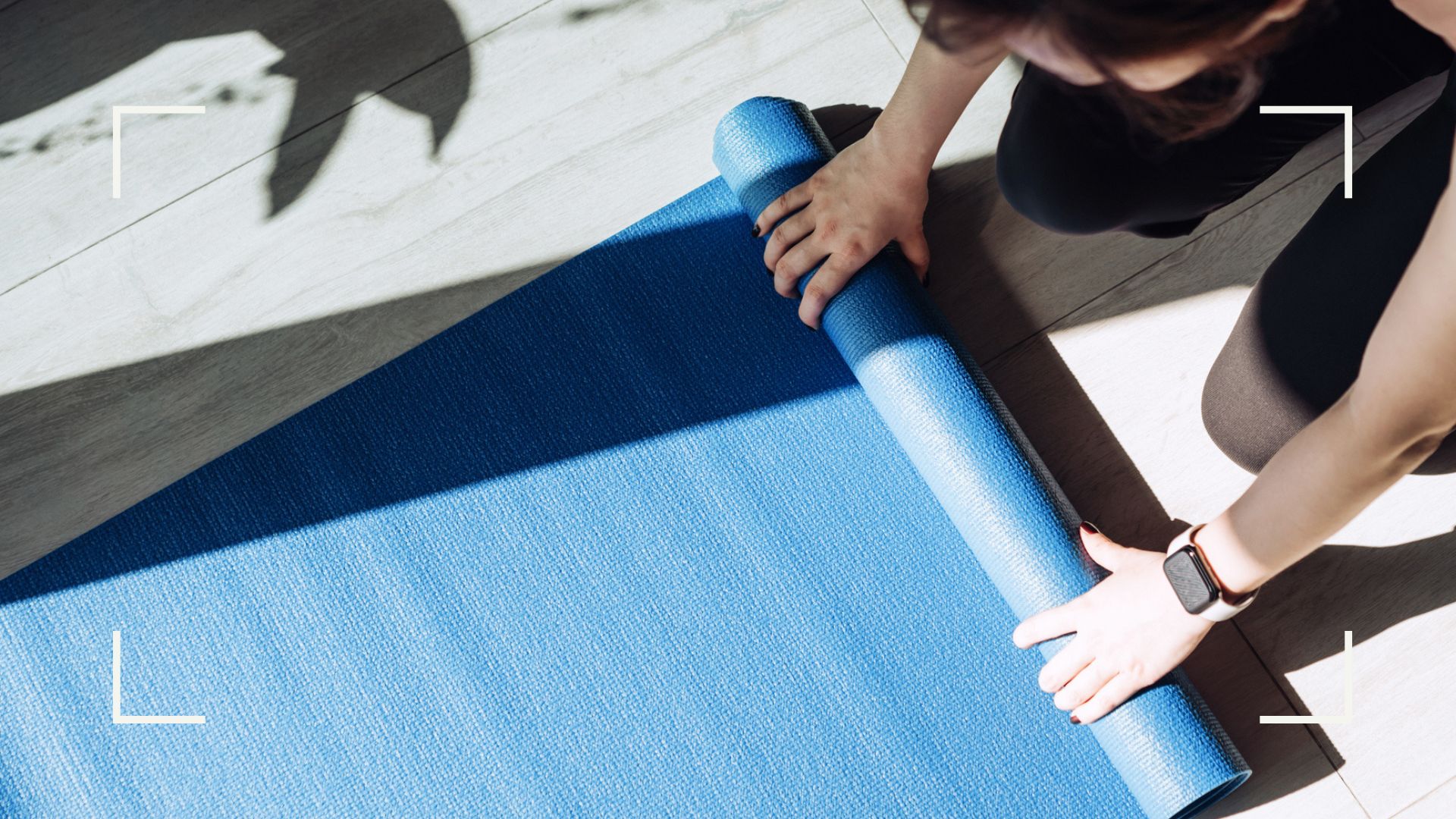

Does wall Pilates really work? This low-impact exercise, which involves a variation of the practice's traditional exercises while incorporating the use of a wall for support, resistance and alignment - has been generating growing interest online thanks to it's suitability for all fitness abilities.
As you'll see, leading experts within the workout space believe that wall Pilates, which you can practice at home or the gym without needing a lot of space, has a multitude of benefits - from improved core strength to boosted balance. What's more, as the trainers we've spoken to explain, it's particularly kind on muscles and joints, and therefore great for women wanting to feel more stable as they move at the same time as protecting their body.
While it is a great option for those seeking Pilates for beginners, others who want to challenge themselves more with the practice - alongside traditional mat and reformer Pilates options - can likewise stretch themselves further. As well as the perks of the practice, our Pilates instructors also share how long it might take to see results, their thoughts on the famous 28-day challenge and all the best advice for getting the most out of your sessions.
Does wall Pilates really work?
1. For stronger muscles
As a great form of Pilates for strength training, wall Pilates works to strengthen your muscles. "Many wall-based exercises require the engagement of the core muscles, with a targeting of the abdominals, obliques and lower back," says Aimee Victoria Long, a personal trainer and Pilates instructor.
"Throughout each movement, focus on engaging your core muscles by drawing your navel toward your spine," she advises. "This helps stabilise your pelvis and spine, and enhances the effectiveness of the exercises." It also makes wall Pilates one of the best core exercises to do at home.
"Wall Pilates also targets the lower body, especially with movements like leg lifts, squats against the wall and lunges with the support of the wall," she notes.
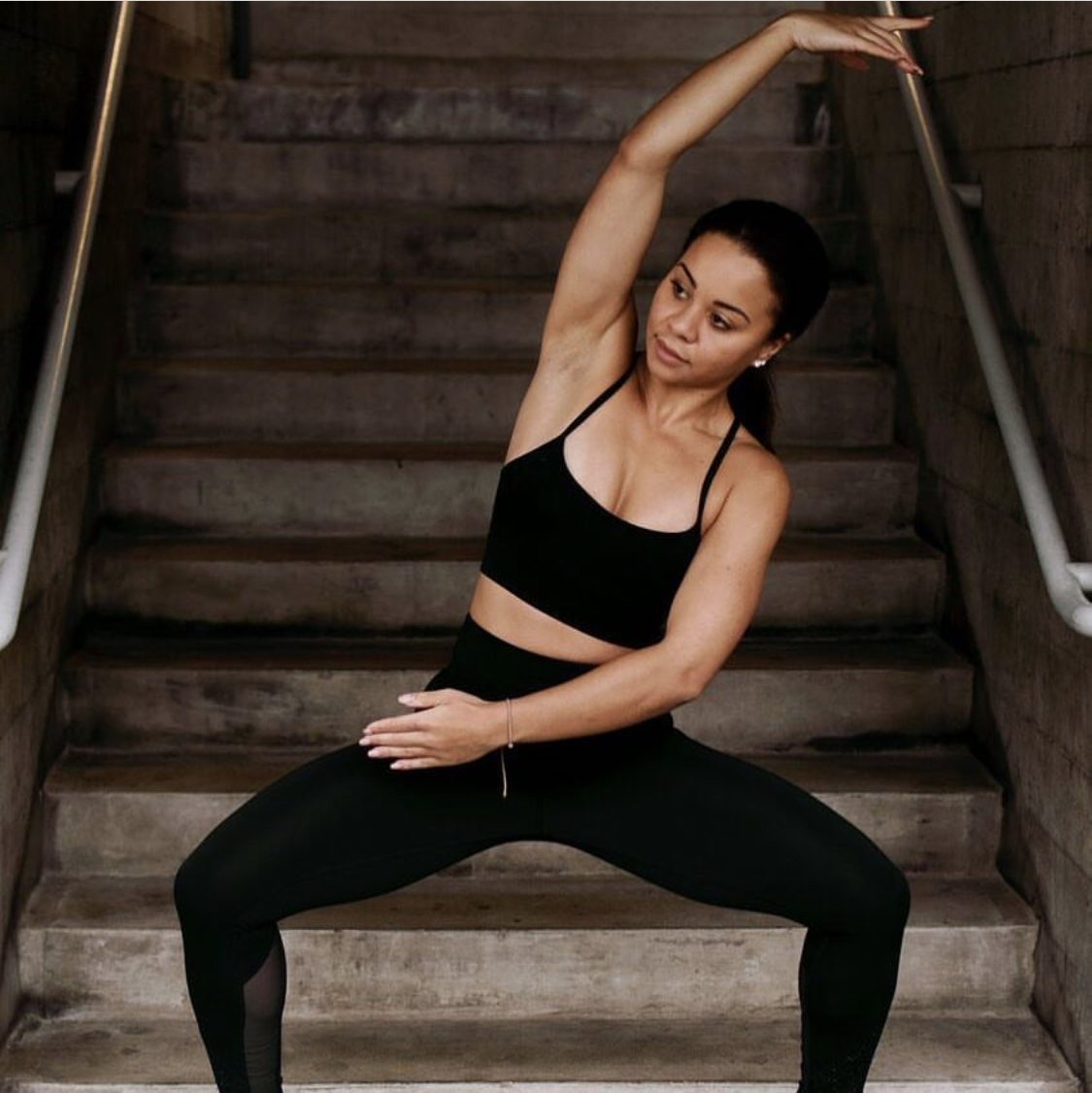
Aimee Victoria Long is a leading personal trainer and Pilates instructor, working, alongside a team, from her London studio. She is renowned for using a unique mix of fitness disciplines - such as strength and conditioning, as well as barre and HIIT - with her clients, who include A-list celebrities and members of the Royal Family.
2. For balance
Always feel a bit wobbly during your regular full-body Pilates workout? The wall Pilates workout works to provide stability and support. "It can you to focus on improving balance and coordination," explains Long. "As you get better, you can incorporate more challenging exercises, such as single-leg movements."
Sign up to our free daily email for the latest royal and entertainment news, interesting opinion, expert advice on styling and beauty trends, and no-nonsense guides to the health and wellness questions you want answered.
She adds that wall Pilates will also simultaneously enhance your flexibility, since it involves movements that focus on stretching and lengthening the muscles.
3. For weight loss
While healthy, sustainable weight loss involves good nutrition as well as exercise, wall Pilates can help you gradually work towards this goal. "Any kind of Pilates - including using a wall - may not be as calorie-burning as high-intensity cardio exercises, it can still contribute to a calorie deficit," points out Long.
"Additionally, it helps build lean muscle mass, which can increase metabolism and calorie expenditure even at rest."
4. For posture
If you are finding yourself often hunched over your desk, then wall Pilates could be work to straighten out your spine. "Proper posture is essential for overall health," says Long of its importance to muscles and joints. "With this in mind, wall Pilates emphasises alignment and good form throughout exercises, which can help correct postural imbalances and prevent issues such as lower back pain in women and muscle strain."
5. For mental health
When considering does wall Pilates really work, it's important to think beyond just physical gains. There is increasing evidence that movement is integral to both physical and psychological wellbeing. "Like other forms of exercise, wall Pilates can have a positive effect on mental health," Long says. "The focused movements, concentration on breath and mind-body connection inherent in all Pilates practice can help boost your mood and ease stress."
To make the most of this benefit, mind your breathing. "Inhale deeply through your nose to prepare, and exhale fully through your mouth as you perform the movements," says Long, of how breathing exercises can help. "Focus on deep, controlled breaths to engage your core and promote relaxation."
6. For injury prevention
Like other forms of the practice, wall Pilates is low-impact - which makes it particularly beneficial for women going through menopause symptoms, due to declining oestrogen levels, need to be more protective of their bone health.
"Wall Pilates can work to reduce the risk of injury and aid in recovery from existing injuries because of the focus on controlled movements and proper alignment," says Long. She uses the example of a 'wall sit', which can help improve your technique to work up to doing the many types of squat without assistance.
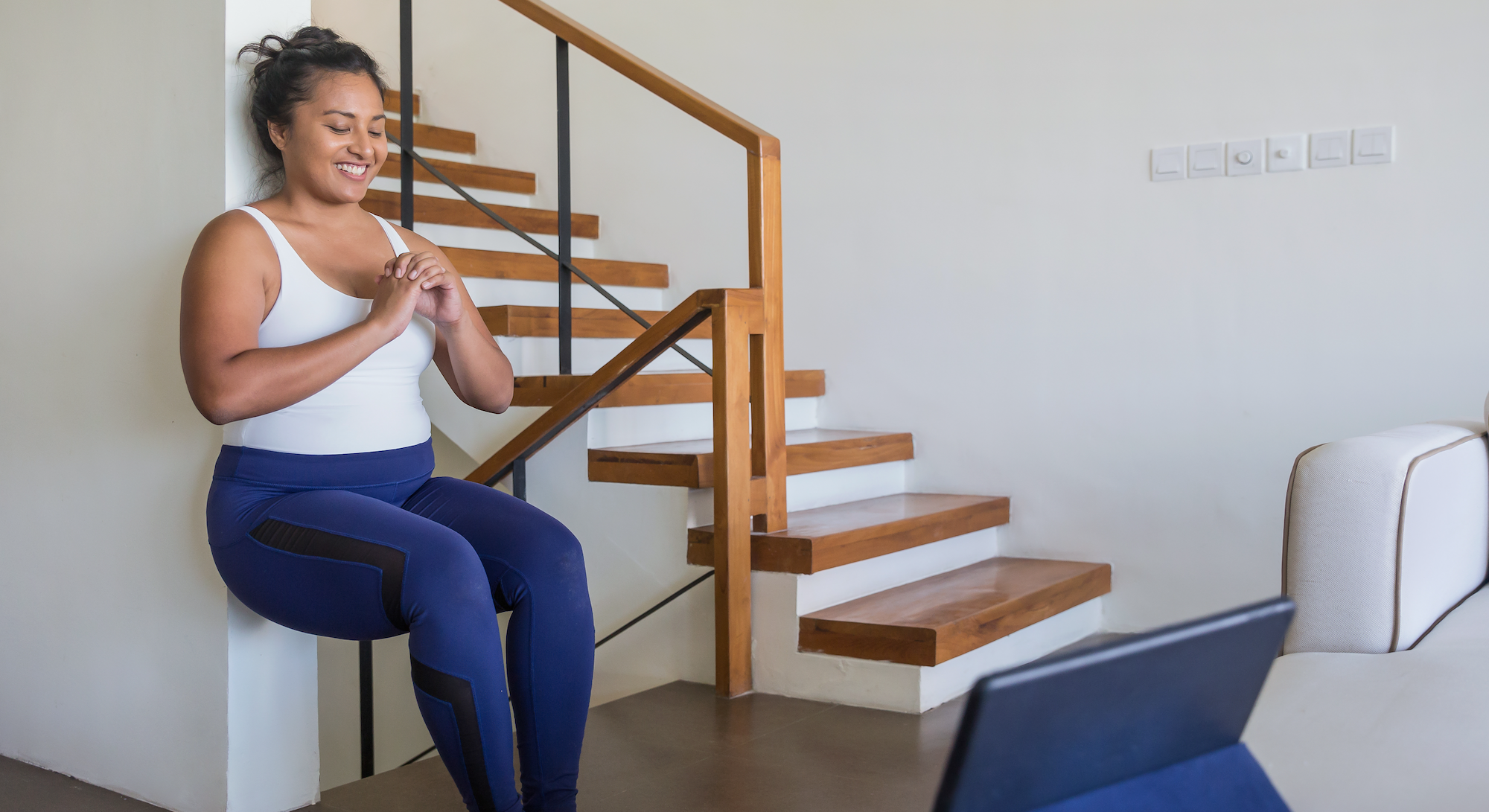
Wall Pilates can work to strengthen your leg muscles, helping you work up to a full squat unsupported.
How long does it take to see results from wall Pilates?
The question of does wall Pilates really work depends on the timeframe you're working with. "Results can vary based on factors such as how often you practice, your fitness level, your consistency and your diet," says Long. "It's essential to remember that everyone's body responds differently to exercise, so be patient and focus on the progress you're making"' However, she adds that many people begin to notice improvements within a few weeks to a couple of months of regular practice.
Pilates instructor Diana Coffey, the head of academy and movement at STRONG Pilates, suggests doing the workout three times a week to really see a difference. "Look out for an improvement in the overall tone of the body, and you might also start feeling and looking taller as your posture improves," she points out.
Long agrees. "You may notice improvements in muscle tone and strength, particularly in the core, legs and back," she says. "Over time, you may experience greater flexibility and range of motion, which can be observed in your ability to perform movements with more ease and comfort. Balance and coordination improve are also likely to get better, making it easier to perform challenging movements with control and stability."

Diana Coffey is a qualified personal trainer with over a decade's worth of experience as a Pilates instructor. Originating from Australia, she is head of academy and movement at Pilates-inspired, cardio-infused training concept STRONG Pilates in London.
What about the 28-day Wall Pilates challenge?
You may have heard of the trending 28-day Wall Pilates challenge. It first originated on TikTok, where it was devised by Pilates instructor Bailey Brown, who claims you can 'transform' your body by doing this form of Pilates every day for just under a month.
"As with any other fitness challenge, it is important to enter it with realistic expectations," notes Coffey. "While 28 days won’t lead to a drastic physical change, it is a great opportunity to form new habits, improve energy levels and create a fantastic base for the future." Long agrees that it can be ideal motivational for some, by providing a structured framework and clear goals that can be tracked - which is also why the 12-3-30 workout has proved so popular.
However, Coffey warns: "Don't be too hard on yourself if you can’t commit to 28 days straight. Improvement is about consistency - but considering the chaos of everyday life it’s okay to spread the challenge out to two to three times a week, for example, to make it more manageable."
Long also cautions that it might have the same issues as other online fitness challenges. "They often involve intense daily workouts which can increase the risk of overtraining and injury," she points out. "They also typically take a one-size-fits-all approach, which may not take into account individual fitness levels. This is why it's important to listen to your body, and turn to the real-life guidance of a qualified instructor who can ensure safety and effectiveness."
Tips for doing wall Pilates
- Get basics right: "I would recommend starting with mat Pilates on one of the best yoga mats, and building control and stability there before moving on to movements using the wall," suggests Long.
- Consider your gear: "Socks might not be your friend as they could slide down the wall resulting in an injury," advises Coffey. "Invest in some good grip socks or go barefoot."
- Practice with care: "Pay attention to your form," insists Coffey. "One negative of doing exercise like this at home is lack of correction from a qualified instructor - so be aware of pain that is outside of the expected muscular exertion and consult a professional if needed."
- Take it slow: "Pilates is supposed to be performed slowly and with control," notes Coffey. "It is not about getting as many reps in as quickly as possible. Think about the muscle group you should be working in each exercise and focus on correct engagement."
- Align yourself properly: "Ensure your body is properly aligned before beginning any exercise," recommends Long. "Stand tall with your back against the wall, shoulders relaxed and feet hip-width apart."
- Lean on support: "Take advantage of the wall for support and stability, especially if you're new to Pilates or working on challenging exercises," suggests Long. "Pressing gently against the wall with your hands, feet or back can help you maintain proper alignment and control."
- Mix things up: "All kinds of Pilates can make amazing strength sessions, but they lack a cardio component, which is essential for a balanced workout schedule," notes Coffey, of why it's important to practice as part of a varied exercise routine with activities like running, HIIT or walking for weight loss.
- Don't be over-reliant: "While the wall can provide support and stability, relying too much on it can hinder your progress," warns Long. "Make sure to engage your core muscles and use it as a tool to enhance your movements."
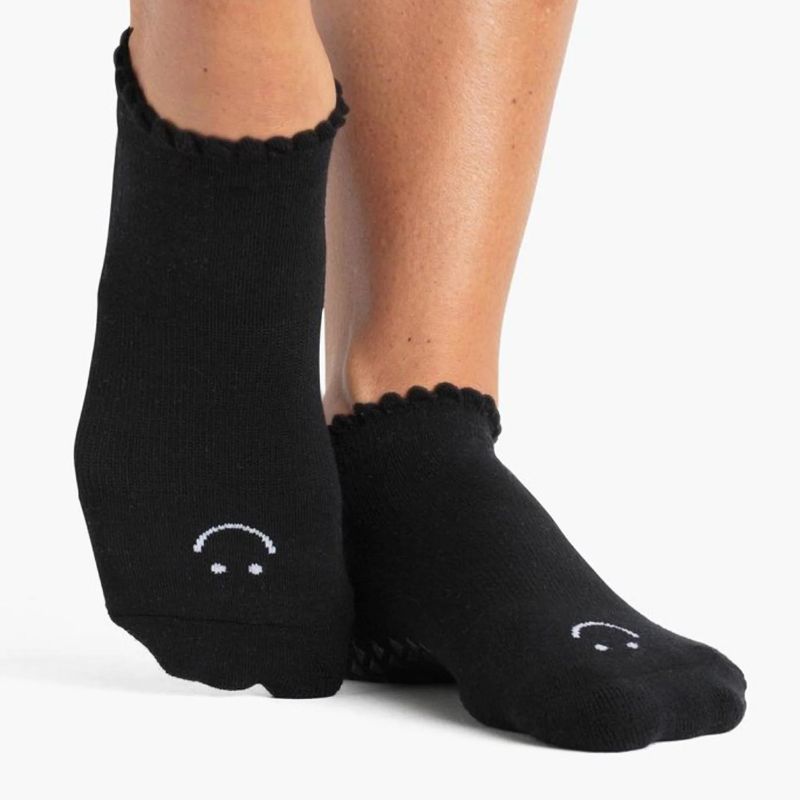
Pointe Studio's Happy Grip sock is made with just over 80% cotton with a sturdy polyester finish and PVC grip underneath. The compression arch support offers additional comfort and the padded ankle rest can help to support your Achilles heel during wall Pilates. The smiley face on the front adds a bit of fun to this fitness accessory, stitched in a low-key white thread.

The Gaiam yoga mat is one of the best thick yoga mats, making it perfect for doing wall Pilates. It really delivers on comfort underfoot with 6mm of support and even during the sweaty sessions, our tester found this mat stood the test of time and held out for a full hour.
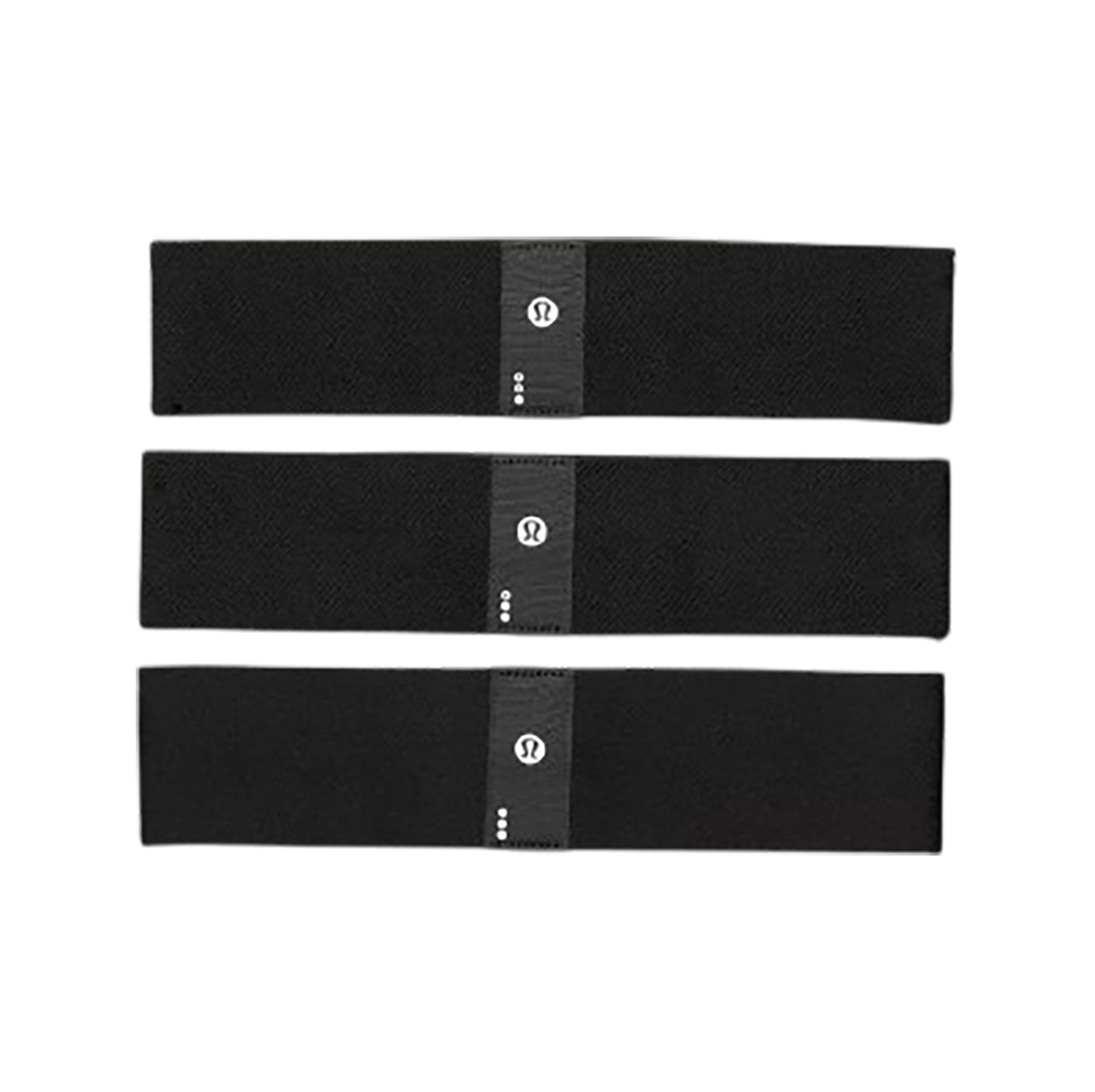
Sturdy, high-quality and easy to use, these Lululemon bands sit among the best resistance bands and are the ultimate set for your strength training or wall Pilates sessions. You can build up through the different bands, starting with the light, and then graduating to the medium and heavy. While the light band is perfect for arm exercises, the medium will test you during glute exercises.

Lauren is a freelance writer and editor with a decade of print and digital journalism experience. While she specialises in covering health and wellness topics - ranging from nutrition and fitness, to women’s health conditions and mental wellbeing - she has written across a diverse range of lifestyle topics, including fashion, beauty, homes, royals and travel.
In addition to writing for Woman & Home and sister title Homes & Gardens, Lauren's work has also been published by Women’s Health, The Times, Daily Telegraph, Elle, Cosmopolitan, The Guardian, Marie Claire, Body + Soul, Stylist, Glamour, Grazia, Red, Dazed Digital, Yahoo Life, The Sun’s Fabulous, Get The Gloss and Hello! among others.